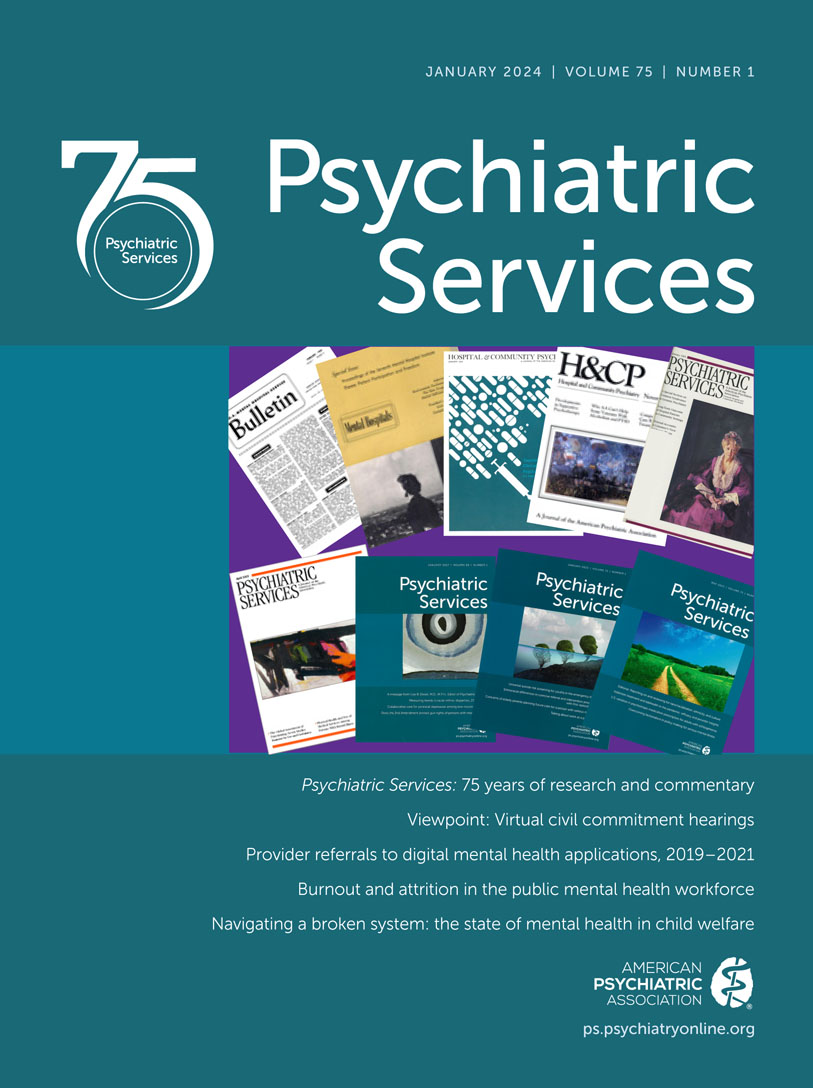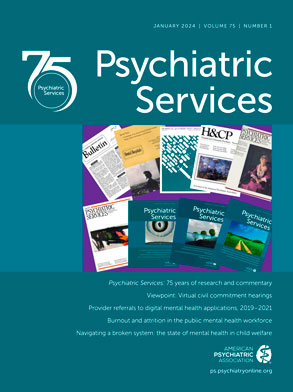Mental health workforce shortages are long standing and widespread (
1). Limited data are available on workforce trends, hindering evaluation of efforts to support the mental health workforce (
2). Monitoring of staffing ratios has been a focus of government efforts to ensure nursing home quality. In mental health contexts, staffing levels are associated with quality indicators (
3,
4) but have not been systematically measured in public mental health settings outside the U.S. Department of Veterans Affairs (VA). Given the critical need to understand whether the mental health system has sufficient staffing levels to address mental health needs, monitoring staffing patterns is essential.
New York State (NYS) fiscal and clinical data were used to assess mental health workforce characteristics of clinics licensed by the NYS Office of Mental Health (OMH), which requires the availability of specific clinical services and adherence to standards of care (
5). This study therefore did not capture the entire NYS mental health workforce (i.e., including those in private practice settings) but rather a subset meeting specific OMH standards, most of which apply to outpatient clinics. Following methods outlined by the VA (
6), we determined staffing ratios with full-time equivalents (FTEs) per 1,000 individuals in care. The total number of FTEs for clinical staff (i.e., prescribers and therapists) was determined by using staffing reports to the provider self-reported Consolidated Fiscal Report (CFR) system between 2009 and 2021 (
7). CFR data are completed by providers that received funding for OMH-operated or -certified programs, or that are authorized to operate an OMH program. To calculate staffing ratios, total FTEs were divided by the number of clients served as estimated by the NYS OMH Patient Characteristics Survey (administered every 2 years, with a 6-month delay for the 2021 period, completed in March of 2022) (
8). To determine the impact on staffing over time, we calculated the percentage change in staffing ratios, number of FTEs, and number of clients served for the 2009–2021 period.
While the number of clients served by mental health clinics increased >50% between 2009 and 2021 (from 386,087 to 626,148 estimated in care, a 62.2% increase), overall staffing increased by only 37.7% (from 3,588 to 4,940 clinical staff FTEs). This resulted in staff-to-client ratios falling by 24.8%: 10.5 clinical staff FTEs per 1,000 clients in 2009 and 7.9 clinical staff FTEs per 1,000 clients in 2021 (
Figure 1). Specifically, staffing ratios for prescribing staff fell by 35.3% (1.7 FTEs per 1,000 clients in 2009 and 1.1 FTEs per 1,000 clients in 2021) and staffing ratios for therapists fell by 22.7% (8.8 FTEs per 1,000 clients in 2009 and 6.8 FTEs per 1,000 clients in 2021).
Staff-to-patient ratios in mental health clinics in NYS have continually decreased for more than a decade, primarily driven by increases in numbers of individuals in care without commensurate staffing increases. Given VA benchmarks (7.4 clinical mental health staff FTEs per 1,000 clients) (
6), our findings suggest that staffing ratios in NYS are similar to the VA-recommended ratio. A better understanding of staffing patterns for the full workforce (including nonclinical staff) and of the full range and quality of services, by race-ethnicity and geographic distribution, is needed for service planning. Whether this approach to workforce monitoring would help NYS monitor its public mental health workforce should be further studied.


